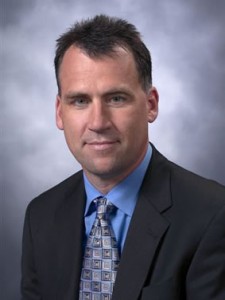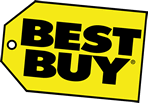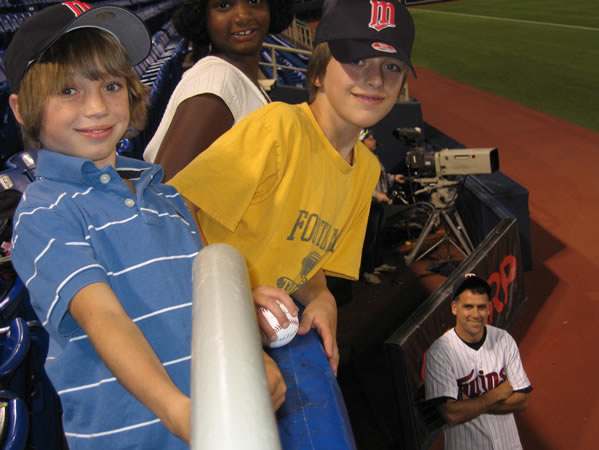
Have you ever wondered how the fortune 500 use direct response marketing? This week’s interview is with the Chief Marketing Officer of Best Buy, Barry Judge (Fortune 500 rank: 72). Barry has a $500M annual advertising spend at his disposal. Most of their marketing online is direct response driven. But one of the really interesting things from the call was learning how they track and analyze everything within each store to find out what performs best – and everything is tracked back to overall demographics via your rewards card. Its working, since Best Buy is bringing in $35 billion annual revenue.
Full Interview Audio and Transcript
Personal Info
Hobbies and Interests: Travel, Running, Movies, Sports
Favourite Sports Teams: All the Minnesota teams, NASCAR
Favourite books:
- A Confederacy of Dunces by John Kennedy Toole
- Team of Rivals: The Political Genius of Abraham Lincoln by Doris Kearns Goodwin
Favourite entrepreneurs: Tony Hsieh from Zappos
Twitter url: http://twitter.com/BestBuyCMO
Personal blog: http://barryjudge.com/
Fast Track Interview
Adrian Bye: Barry Judge, who is the Chief Marketing Officer for Best Buy, is joining us today. Barry, could you tell us who you are and where you’re from.
Barry Judge: I’ve been at Best Buy for about nine years. I actually got to Best Buy through the Internet. At that time, everybody thought the dot-com was going to take over retail stores. We were brought in with the mandate to “blow the company up.” I like to be in a changing and fast-moving environment, and Best Buy has that in its DNA. It changes quickly, and we’re responding to the competition and the consumer almost every day. Before this, I was in a start-up company called Caribou Coffee and also worked in packaged goods with Coca Cola, Gatorade, and Pillsbury.
Adrian Bye: I’m fascinated to see you on Twitter. What prompted you to turn up there?
 Barry Judge: What prompted me to use it in marketing is that I am trying to understand where communication, people and culture are going. I wasn’t really participating in social media at all, but our company is trying to adopt a lot of open architecture philosophies. We’re now very focused not only on “what” we do but “how” we do it.
Barry Judge: What prompted me to use it in marketing is that I am trying to understand where communication, people and culture are going. I wasn’t really participating in social media at all, but our company is trying to adopt a lot of open architecture philosophies. We’re now very focused not only on “what” we do but “how” we do it.
The “how” we do it is trying to figure out how everybody in the company feels they can contribute. Everyone’s point of view is valid, so there is this big effort focused on how we use collaborative tools to facilitate that happening. Within the company, one tool is called BlueShirtNation, which we launched a couple of years ago. This is the Web site where, outside the firewall, employees can talk about whatever they want to talk about. It can be an honest and genuine dialogue about what was good or bad about the company.
We’ve got the Water Cooler, which is an online forum focused more on specific questions. Then we have the Prediction Markets, which has employees trading fictitious stocks or things happening in the company and sharing whether they are going to succeed or not. We also have The Loop, which is an idea forum where you stick your ideas out on the site, and people can add to or subtract from them. You can also invest in them with fake or real money.
All of that activity intrigued me. A couple of people, who are heavily into social media, know that I’m up for things, so they essentially told me, “You got to go out in Twitter.” So far it’s a way for me to get information I might not normally get or even get it faster.
Adrian Bye: I see praises about Best Buy, but I also see a lot of complaints on sites like Consumerist. How do you handle the praises and complaints of the company?
Barry Judge: We have about five hundred million transactions a year and well over a billion interactions. The chances of getting every one of those right is pretty remote. We want to make it easy for people to complain because we want to know what’s going on. We’ve gotten better, and we continue to get better.
The conversations happening on the Web are the real ones. I don’t always believe in them, but they’re out there. We encourage people to tell us what they think. As the CMO, I don’t hear the real stuff always. I wish I did. For example, on Twitter I’m finding that not only are customers telling me the real stuff of what they think but I also have a different kind of dialogue with the employees than I would when I see them in the elevator.
As a retailer in this space, it is important for people to trust us. The only way people will trust us is if we are behaving in a way that makes us trustworthy. Part of that is sharing and being honest, genuine and open about what’s good, what’s bad, what’s working, and what’s not working.
Going forward with social media, maybe we can start to somehow get all those conversations on our Web sites. It’s not hard for people to see what’s being said about Best Buy, both the good and the bad. Whether we want to acknowledge it or not, it’s being said, so why not make it easy.
Robert Stevens, the founder of Geek Squad who still works at Best Buy said to me, “Let’s make it real easy for customers to complain. We want to hear it. Then we can do something about it, so let’s do all we can to make it easy.”
Adrian Bye: I’m interested in your online store. Is a large percentage of your sales done online?
 Barry Judge: In the United States, we do about $35 billion in total revenue. You can imagine that we do a lot of business online as well given the products we sell.
Barry Judge: In the United States, we do about $35 billion in total revenue. You can imagine that we do a lot of business online as well given the products we sell.
We are one of the largest retailers online as well as the largest offline. We’re stronger in certain categories. Part of our value proposition online is that we have stores, and the products that lend themselves to having an offline component do better online. For example, I want to go look at a television and see how it works or I want to lift up a notebook and see how heavy it is; those kinds of businesses we do better online.
We don’t do as well in businesses where you get a lot of stickiness built in, like Amazon does with the personalization and history to make their site better for you.
We don’t think stores are going to ever go away; however, we do know that the direct base selling via the Internet is going to become a bigger slice of the mix going forward. We are doing a lot to invest, not only by dot-com, but also looking at alternative brands that we can launch online with a different value proposition which the Best Buy brand is known for.
Adrian Bye: Do you have much of an affiliate program?
Barry Judge: We do pretty good business that way. We’re spending a lot more time thinking of how to make our Web site more relevant and shoppable. Even though we already sell online, the bigger impact for us is how the Web site actually impacts in-store sales. We spend a lot of time building up our future site online so we can help our offline business. We do a decent business in affiliate marketing. Most of the time, however, we spend on ways we can actually help you figure out what you want to buy in our stores.
Adrian Bye: How does direct response marketing fit in with Best Buy?
Barry Judge: I would say 25 to 30 percent of our mix is in direct marketing. We have 29 million people in our rewards and loyalty program. Over 50 percent of our sales are run through using our card; that is a tremendous source for understanding consumers. In addition, we recently launched the silver tier within our rewards program. We are building into it experiential benefits, return policy differences, a special phone number to call us on, and guaranteed access to certain kinds of short inventory products like Nintendo Wiis. A lot of direct marketing goes on within that.
In addition, we’ve built different models that are very predictive in terms of who will respond to direct marketing offers and who won’t. During the year, we do about eight programs where we invite people in for sales. It is based upon understanding the future value as well as who will respond to direct marketing.
We do a number of trigger programs as well. Once you buy product “x”, such as a flat panel television, we know the kind of purchase pattern you’ll have and the products you are likely to buy in the next 12 months. This is based on the history of other people who bought that product. We’ll send that email or direct mail inviting you to buy the product that you are probably going to want.
Adrian Bye: What sort of patterns do you end up seeing with the card tracking purchase behavior?
Barry Judge: First of all, we understand how much a customer is worth to us. That’s important because it helps us understand more customer-specific investments versus mass investments. We can spend more money on retaining this actual customer versus another customer that might come in once, twice or three times a year.
Additionally, we use it to understand not just frequency of purchase but profitability. With our entire customer database, we’ve been able to essentially assign profitability to every one of them. We break them into three levels: best sales, top best sales, and bottom best sales.
 The top best sales are interesting because they are the most profitable people. The bottom best sales are also interesting. First, we lose a lot of money at the bottom best sales level, but they’re not necessarily bad customers. They’re actually good customers. They are buying all over the store, and end up buying things that aren’t profitable for us. The opportunity with them is trying to figure out how to put more profitable ideas in front of them instead of the ones that cost us money.
The top best sales are interesting because they are the most profitable people. The bottom best sales are also interesting. First, we lose a lot of money at the bottom best sales level, but they’re not necessarily bad customers. They’re actually good customers. They are buying all over the store, and end up buying things that aren’t profitable for us. The opportunity with them is trying to figure out how to put more profitable ideas in front of them instead of the ones that cost us money.
It helps us understand customer-specific investments. Since we have an understanding of what people are doing, we can do more effective direct marketing. Lastly, it helps us understand when our sales are up or down in a particular business or geography. We can then understand who we are up or down with. That helps us fine-tune our promotional strategy, even on a mass basis.
Adrian Bye: Although you talk about your marketing mix, in fact, a Best Buy store is like a little direct marketing test pool where you’re testing all the time to see what works.
Barry Judge: Yes, exactly. That’s kind of what I talked about earlier when I mentioned creating an open architecture culture. It’s not my responsibility to come up with all the marketing ideas. If we can truly enable a culture where people believe and feel accountable, then they need to come up with their own marketing ideas. All of a sudden instead of 25 people in the Marketing Department trying to come up with ideas, you have 150,000 people across the company trying to come up with ideas. If every store has a plan, then they get some things from the corporate office, but they also have the responsibility to come up with things that the corporate office can’t see.
Adrian Bye: But then you have to do that while still protecting the brand and the customer interest.
Barry Judge: You do that by providing bumpers. We’ve got a brand idea, and we’ve broken the brand idea down into five ways that it’s brought to life. One of our promises is called “Never Leave You Hanging.” We are trying to get better at never leaving the customer hanging. As the store takes that as our mantra, they can act in a moment and a way consistent with that. Everything happening in a retail store is in that moment. If they can remember these broad-based principles in their head more often than before, they can make the right kind of decision.
Adrian Bye: What you have told me about the card is very interesting. With the card, you can look at member data and see which are the more profitable lifetime customers. Then when you understand who they are, you can target your outbound advertising in both branding and direct marketing to attract those people, can’t you?
Barry Judge: We can understand profitability by customer. There’s a stat that we are actually making too much money on the customers that are most profitable. We should be investing more in them and hopefully making them more loyal with how we are investing and experiential improvements, like the return policy, rather than trying to figure out how to make the people who are draining dollars more profitable. Then we spend less on the middle people because they are not contributing much at all.
Adrian Bye: You’ve almost taken it too far.
Barry Judge: Yes, exactly. You need to make sure that the people who are the most loyal don’t go anywhere. Make sure you invest in them because they are going to drive your business going forward. You can’t lose those people. If you lose one of those customers, you need to get 80 new customers. You shouldn’t just treat them like everybody else. You treat them differently, and then you have a better chance of holding onto them.
Adrian Bye: Some Web sites love branding campaigns from a company like Best Buy. They can have a certain number of CPMs, stick them up on the site, and they’ll burn through them quickly with no real perceivable returns. You don’t particularly look for a call to action or anything like that; you just want the banner in front of people. How does the advertising and branding work for you?
Barry Judge: We use advertising for different purposes. Some purposes are that we want people to click, and we’re trying to drive engagement during that moment or within a seven-day period. Other times, we’re trying to drive an impression.
With the products we sell, we are also trying to get top-of-mind awareness. For example, you might not be ready to buy a television today when you see an ad from us. However, three months later when you start thinking you want to buy a television, we want to be there in your head.
In mass media, we try to be more general and talk about Best Buy the brand because most people aren’t interested in buying a specific product next week. There may be people who are ready to buy a product, but the percentage of people who want to buy a PC is only 10 percent. The people who want to buy a TV are another 10 percent.
If we get really specific in mass media, then we’re turning off everybody else and just focusing on the 10. If we can land the brand idea, we can bring all of the people thinking about buying whatever it is they are thinking of buying.
Online is more targeted. Typically, there’s less awareness building stuff online. We actually are trying to drive an action to our Web site. About 90 percent of our online focus is based around action. Specific sites can give us an idea that people are in a certain mindset. Typically, we are trying to get them to do something, although it isn’t always buying.
We want to move them through the purchase funnel. If you’re just thinking of what to buy, we might get you to the next phase, which is “I want to buy versus I have to buy.” The typical thought process of buying a television takes six months from idea generation of “I want to buy a television” to actually buying one. During that time, people are thinking about what they want to do for a while. They research and study. We’re just trying to move them along at whatever stage they are at.









